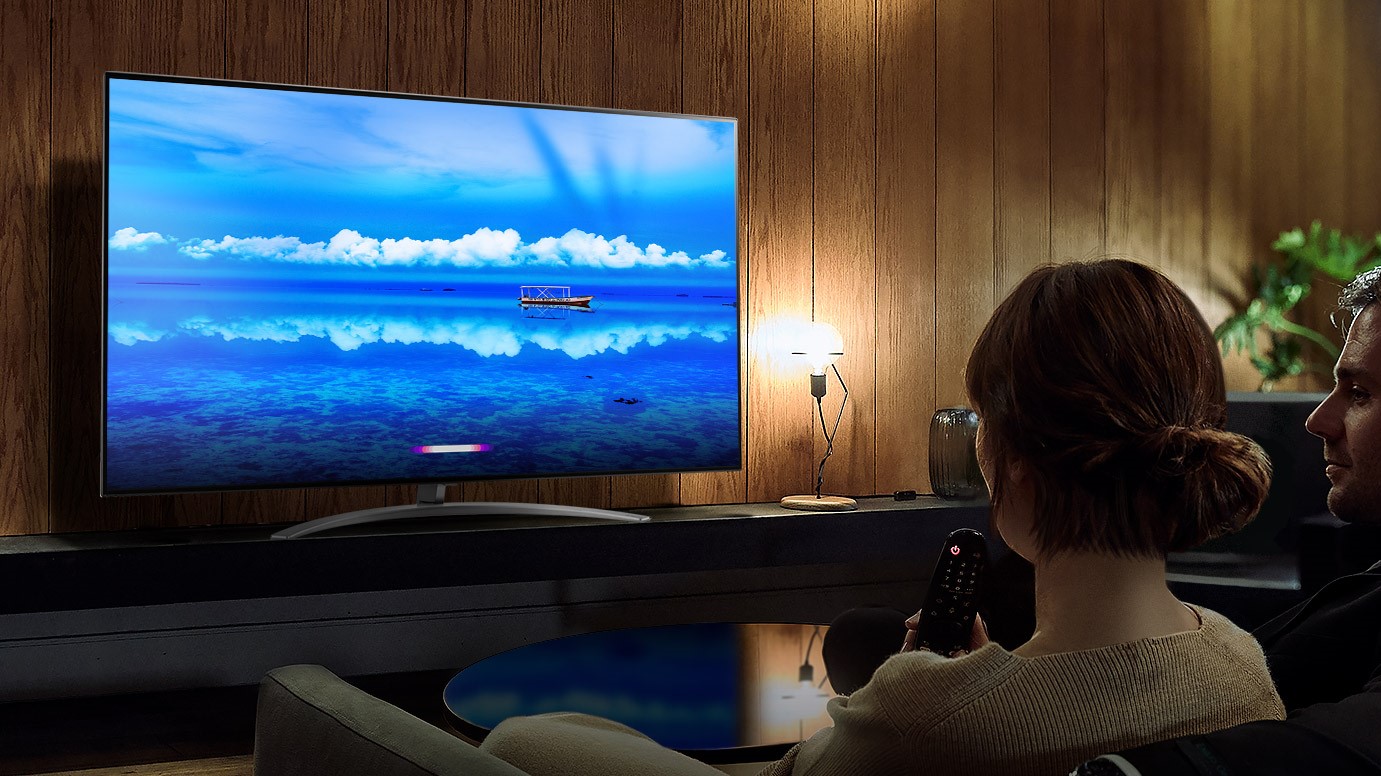TechRadar Verdict
While it doesn’t have the inky black levels of LG’s line of OLEDs, this new-and-improved NanoCell flagship screen is one of LG's best LED TVs yet.
Pros
- +
Incredibly accurate colors
- +
Alpha a7 II processor
- +
WebOS is better than ever
Cons
- -
As expensive as an OLED
- -
Frame is a bit wobbly
- -
Aggressive motion processing
Why you can trust TechRadar
Super UHD is dead. Or... well, at least it is in name. Now there’s NanoCell, the same technology LG has been refining for years with its Super UHD monicker, now with a new name that makes at least a little more sense.
Of course, the name isn’t the only thing that’s changed: this year’s crop of LG flagship LED screens do have a few new tricks up their sleeves, like the addition of the Alpha a7 II processors and the much-enhanced WebOS with ThinQ smart platform, that make this not only one of the smartest - but also one of the best - LED TVs LG has ever produced.
Sure, the screen has its shortcomings like LG’s overly aggressive motion processing, a bit of blooming and a less stable stand than we would’ve liked, but by and large this is an impressive screen that performs well above expectations.
If you’re looking for a beautiful LED screen for your living room that’s also supremely smart and upscales content well, LG’s top-tier NanoCell screen is a rock-solid choice.
LG NanoCell 9 Series price and release date
By the time you’re reading this, the LG NanoCell 9 Series will be available to the public in most of the world - either as the souped-up 65-inch SM9500 reviewed here, the SM9800 series that’s available in 55- and 65-inches in the UK, or as the SM9450 in Australia.
Whatever name it goes by, the specs are similar: an IPS panel with full-array local dimming, a 4K resolution with four types of HDR support, the new 2nd Gen α7 Processor and the latest version of WebOS.
It’s a robust package, but also a pretty expensive one, as the LG 65SM9500PUA (the model reviewed here) is $2,499. The nearly equivalent LG 65SM9800PLA sells for £2,599 in the UK and, if you’re down under, the LG 65SM9450PTA sells in Australia for AU$5,399 - though the latter hasn’t adopted the NanoCell monicker yet and is still billed as a Super UHD screen.
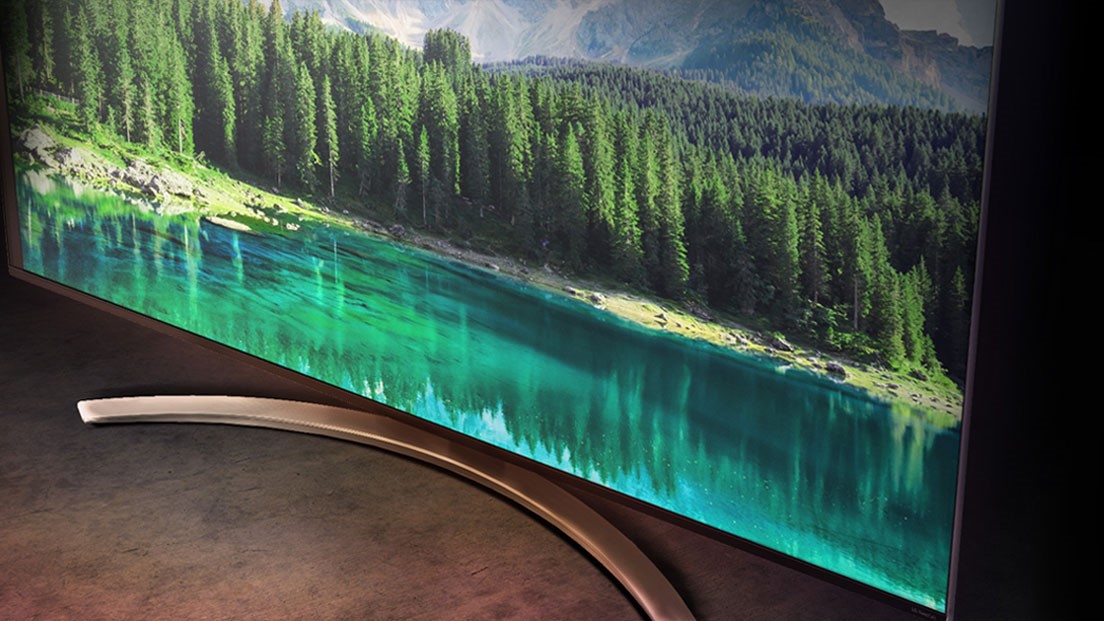
Design
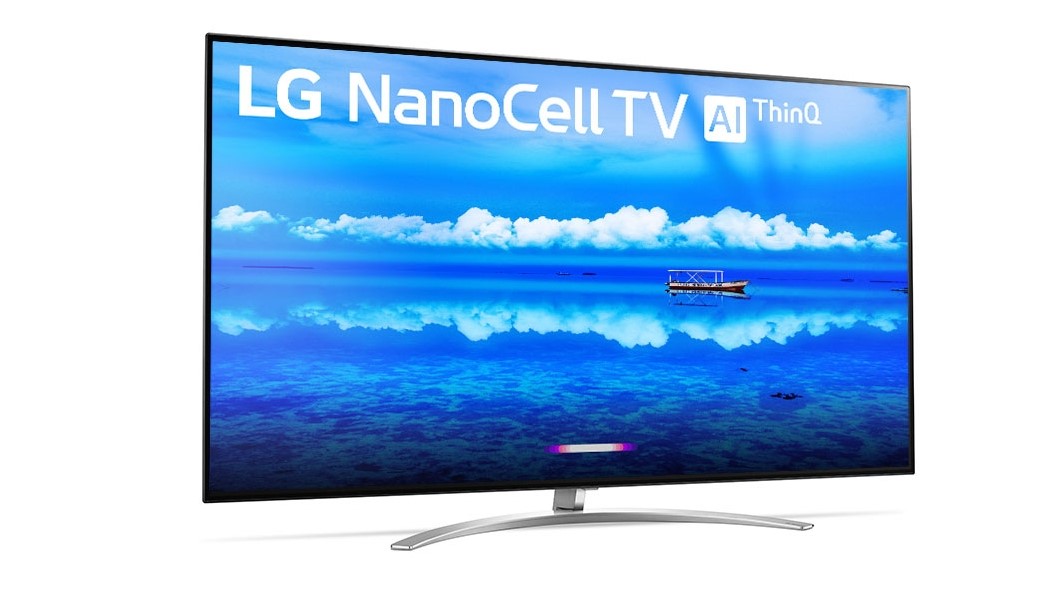
Screen Sizes: 55- and 65-inches | Tuner: Freeview HD, satellite HD | 4K: Yes | HDR: Yes | Panel technology: LED | Smart TV: Yes, WebOS and ThinQ AI | Curved: No | Dimensions: 57.2 x 32.8 x 2.5 inches (W x H x D) | Weight: 59.5 lbs | 3D: No | Inputs: 4xHDMI 2.1, 3xUSB, 2xRF, optical, analogue, headphones, CI slot
The look of the 65SM9500 is largely the same everywhere: it’s a portly 65-inches with a slim bezel and rounded back. The screen is held up by a crescent-shaped stand that LG has been pairing with its premium TVs for the last few years, which nicely accents the space-age look LG is going for.
Problematically, however, once it’s on the shelf you won’t be able to move it much - the crescent-shaped stand does have a tendency to wobble and could, under the wrong circumstances, tip. It’s best to wall-mount it if you have the tools (and the help) necessary as it doesn’t have the same stability as other screens that use a more traditional design but the stand is sufficient if that’s not an option.
Duck behind the SM9500 and you’ll see a bevy of ports, the most important of which are the four HDMI 2.1 ports with HDCP 2.2 and eARC compatibility.
Ports aren’t something you’d typically dwell on, but LG’s use of HDMI 2.1 enables other really crucial future-facing technologies like VRR (Variable Refresh Rate) and HDMI ALLM (Automatic Low Latency Mode) that’s really crucial for gamers who want the best performance from their 4K consoles. That gives the LG SM9500 over similarly priced Samsung and Sony TVs, but it’s the kind of thing that would only impact a small subset of potential owners.
This is a minor thing, but the way the HDMI ports are situated, cables do jut out from the sides and can be seen dangling below the TV. This is a problem LG has fixed in some of its nicer-looking OLEDs' stands, but it does make the SM9500 look a bit unkempt.
Outside of the HDMI ports, there are also three USB ports, with two at the side and one facing rearwards, an ethernet port, a CI slot, an optical digital output, an ATSC TV tuner for US OTA broadcasts and a line out that doubles as a headphone jack. In terms of wireless options, there’s built-in WiFi (802.11ac), Bluetooth 5.0 and AirPlay 2.
The design feature we really enjoyed most, however, was this year’s updated Magic Remote, a motion-sensitive Bluetooth remote control that has a mic built right in and acts like a better version of the old Wii controllers. Being able to wave the controller around to select different inputs and channels made the experience feel slicker and more intuitive than other smart platforms, plus quick-access buttons for Netflix and Amazon Video make moving between the most popular services a breeze. (In demos, the latter can be used to call up Alexa with a long-press, a feature that hasn’t rolled out yet to the public, but should be coming in the near future.)
Design TL;DR: Despite its premium aesthetic and future-proof HDMI 2.1 ports, we found the SM9500's design to be a bit too wobbly and messy for our liking.
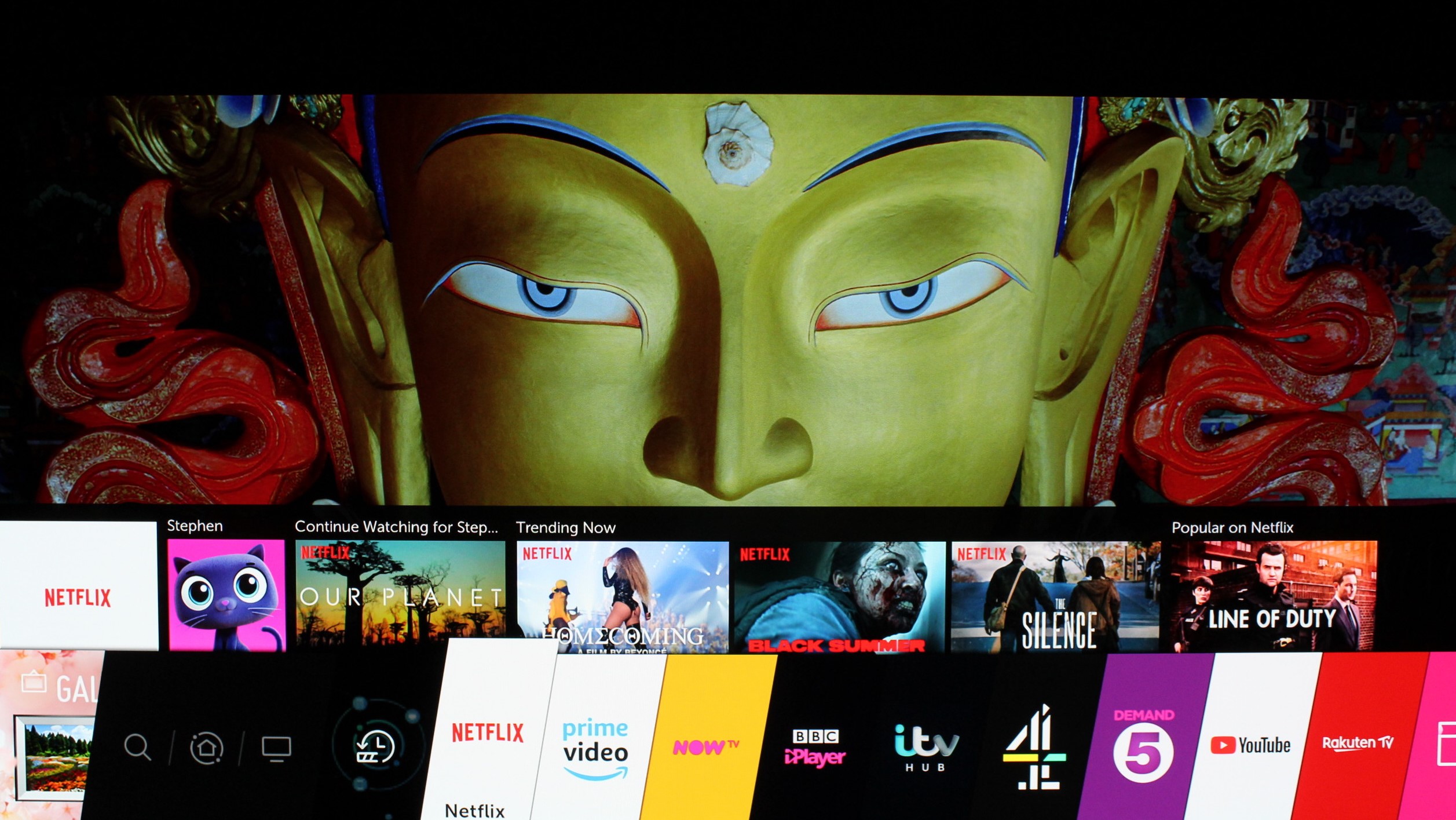
Smart TV (webOS with ThinQ AI)
While the design isn’t everything we hoped for this year, the updated version of webOS with ThinkQ AI most certainly - it is by far the fastest, smartest and most robust smart platform we’ve tested on a TV.
For starters, load time is nearly non-existent on a decent wireless connection. We were able to zip from Netflix to Amazon Prime Video in a matter of seconds, with both apps loading their respective content at near instantaneous speeds.
Moreover, while LG’s latest WebOS is missing a few fringe services (PlayStation Vue being the most egregious), you’ll find nearly every major player here with Netflix, Hulu, Amazon Prime Video, YouTube and more all supported in-house.
Better than both the zippy interface and robust selection of apps is the integration of both Google Assistant and Amazon Alexa on this year’s models. Activating Google Assistant is done by pressing the microphone button on the smart remote while Alexa will be available by holding the Amazon Video button when the feature goes live. You’ll need to connect both Alexa and Google Assistant to your respective accounts in the TV’s settings, but otherwise it’s relatively smooth sailing.
The last feature worth mentioning for WebOS is its support of screen mirroring, a feature that allows anyone on your Wi-Fi network to Cast content from the phone or tablet to the TV without pairing over Bluetooth. This feature is supremely helpful when you have company over and you want to show them a quick clip from YouTube, or when you’re watching something on your phone that you think would look better on a 65-inch screen. Either way, its inclusion here is incredibly convenient.
Smart TV TL;DR: This year’s WebOS makes the SM9500 a true smart TV in every sense of the word. From small touches like screen mirroring to big ideas like the inclusion of both Alexa and Google Assistant, WebOS is absolutely brilliant.
HD/SDR Performance
While the SM9500 is born and bred to be a 4K HDR powerhouse, it’s still a fantastic screen for watching HD/SDR content. That’s due in no small part to the Alpha a7 II processor that does an exceptional job upscaling HD/SDR content for the bigger, pixel-dense screen.
According to LG, its 2019 processors use a four-step upscaling process that smooths out images to reduce gradation and noise in the image. In practice, this makes movies and TV shows made years ago look like they’ve been remastered for 4K screens. Toss in some image enhancement courtesy of the AI’s massive image library and you finally have an LG TV that can rival what Sony’s done with its upscaling process.
The best part about the upscaling process is that there’s no work on your end required to get the best image, other than switching from the default Standard or Vivid picture mode to either the HDR Effect setting to get a bit of pop in your HD/SDR pictures or either of the ISF Calibrated settings for something more natural.
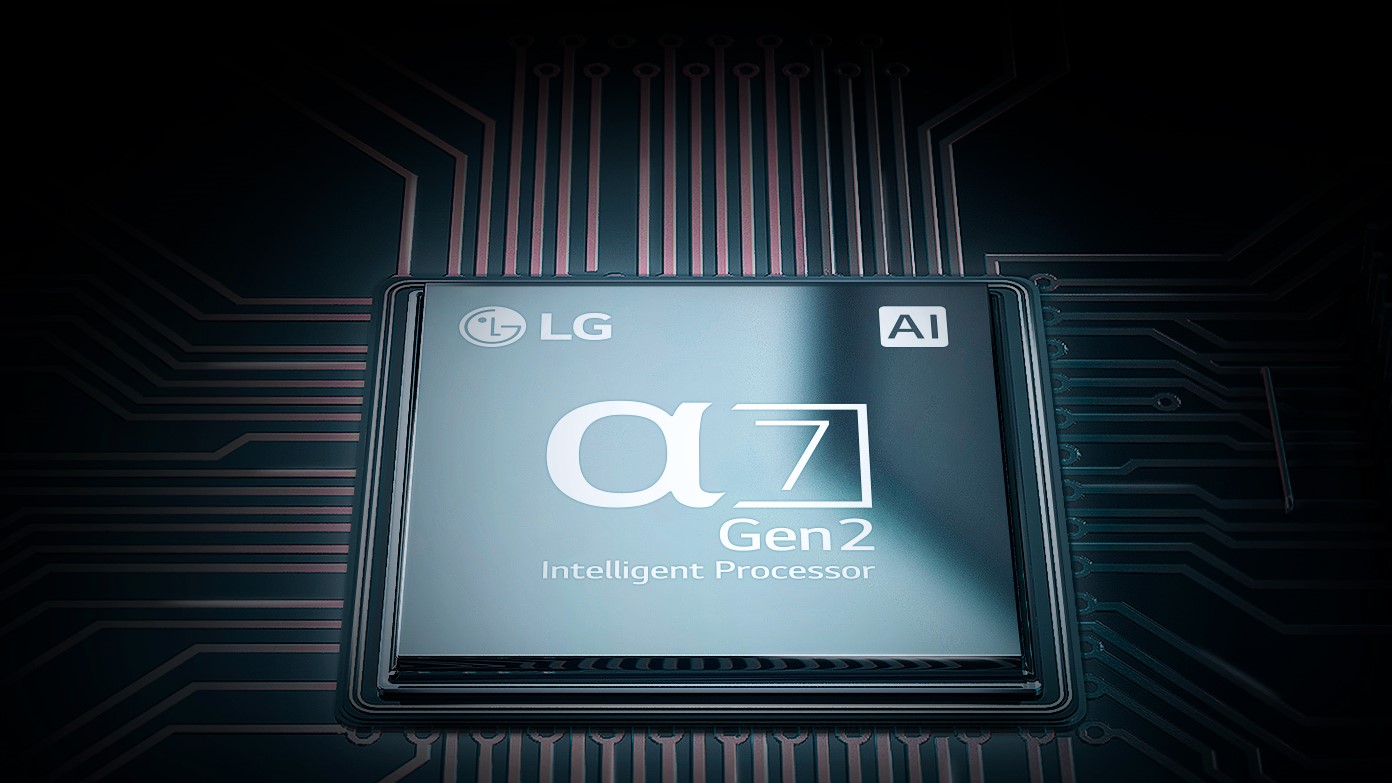
The reason we’re being so hard on LG’s Vivid mode is that, by default, it enables TruMotion, LG’s name for its heavy-handed motion processing feature. While it helps make fast-moving content like action shots or sports look buttery-smooth, TruMotion makes dialogue-heavy scenes or panoramas look like they’re moving at two-times speed - something that makes movies like Gravity tough to stomach. That said, TruMotion is a nice tool to have in your back pocket when you want to have your friends over to watch a game... but it’d be better if some of the modes didn’t enable it by default.
That being said, however, if you’re a gamer you probably won’t notice motion processing at all as LG’s TVs have Auto Low-Latency Mode that can detect when a console is connected to the screen, and that completely turns off image processing. That’s a good thing as, without it, LG’s 2019 TVs have an almost imperceptible lag time of 12.7ms. If rumors are true and the next generation of consoles support more High Frame Rate (HFR) content, LG’s TVs will be the clear cut choice for gamers - even without it, they’re already a top contender.
HD/SDR Performance TL;DR: While TruMotion is still as aggressive as it’s ever been, LG’s upscaling algorithm makes HD/SDR content look better than ever.
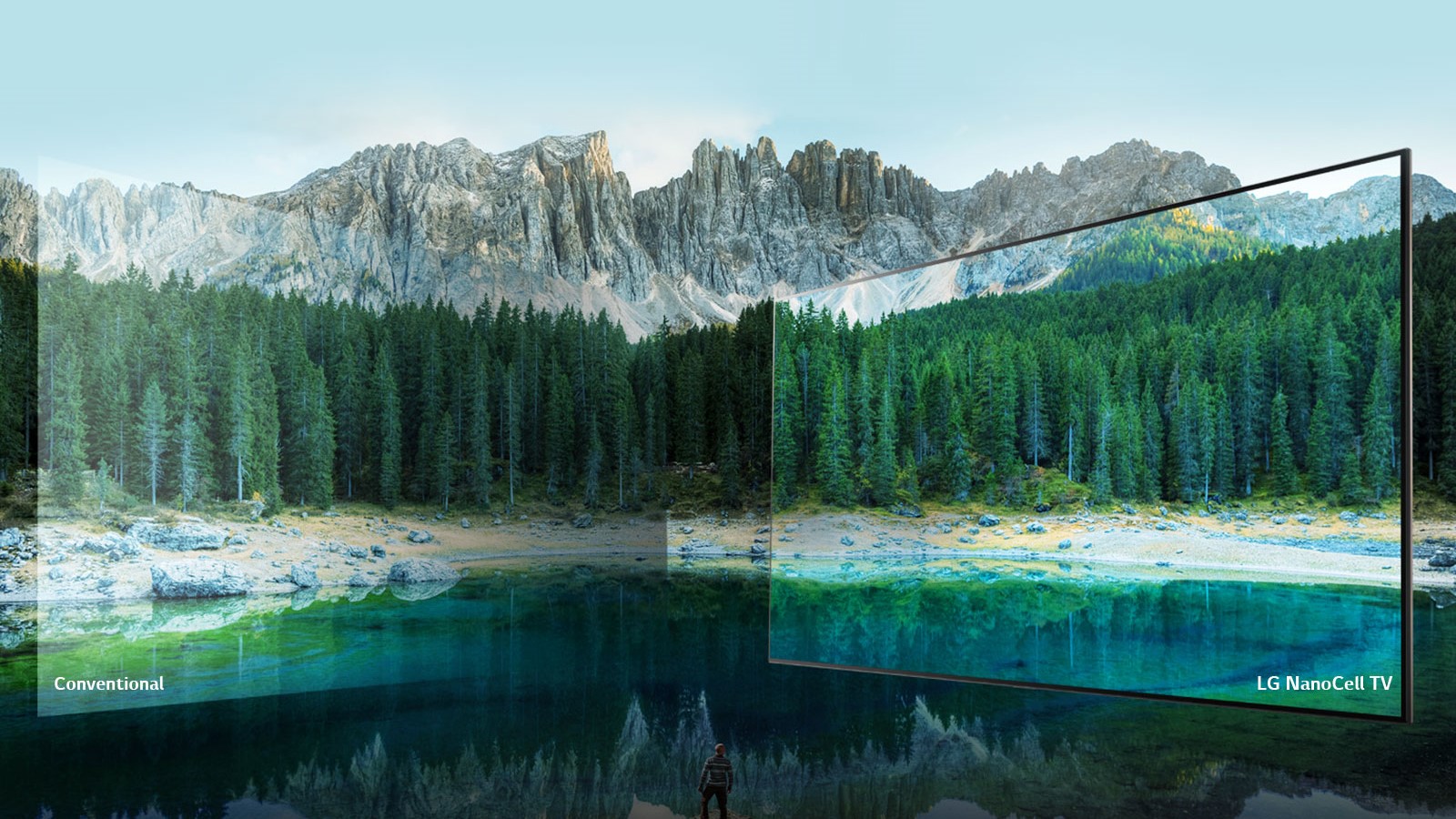
4K/HDR Performance
However, put on some 4K/HDR content like Lost in Space or David Attenburough’s Netflix series, Our Planet, and the SM9500 really shines. This TV is at its best with bright, bold content - and though it’s not its specialty, the SM9500 is plenty good at darker content, too.
But let’s start with the TV’s strong suit - bright, colorful images that can be found in nature docs and animated films. Watching Our Planet on this TV nearly took us out of seat. The perfectly saturated colors of the NanoCell screen make the rain forests and deep oceans come to life while its great contrast makes night scenes easy on the eyes.
But contrast is a double-edged sword. While the TV is certainly bright, LG’s flagship screen seems far more focused on accurate color reproduction than a higher peak brightness that, say, Samsung’s QLED lineup is known for or the black levels of its inky OLED. While colorful content is an absolute joy to behold, it means that some HDR content - especially scenes with both very bright and very dark elements - isn’t as impactful as it could be.
It’s also easy to notice a bit of blooming that you wouldn’t find on an OLED screen. That’s not to say LG hasn’t done a fair job mitigating the issue - in fact, the SM9500 utilizes LG’s Full Array Local Dimming Pro tech where the SM9000 only has Full Array Local Dimming - but some of the brightest images do have a halo effect that you wouldn’t find on an OLED.
Lastly, while the SM9500 does a good job of holding its color when you sit somewhere to the side of the screen, you still want to sit fairly straight on to get the full color effect - this is still an LCD-LED screen afterall, and off-axis viewing isn’t as good as an OLED - but the IPS panel does a great job of making the content look nearly as good from any perspective.
Some of the small criticisms we mentioned earlier might lead you to believe that, well, maybe this 4K HDR screen isn’t really ready for primetime viewing - and that couldn’t be further from the truth. While these small imperfections do take away from the experience, most of the HDR content you watch - especially content mastered in Dolby Vision - will really blow you away. Dolby Vision content from Netflix makes exceptional showcase content when you want to push this TV to the limits and the aforementioned ISF Calibration modes make it super simple to get pro-level calibration right out of the box.
4K/HDR Performance TL;DR: While it has a few minor flaws like blooming issues and a less-than-ideal peak brightness, the SM9500’s color accuracy is unparalleled. Turn on some Dolby Vision content and be prepared to be blown away.
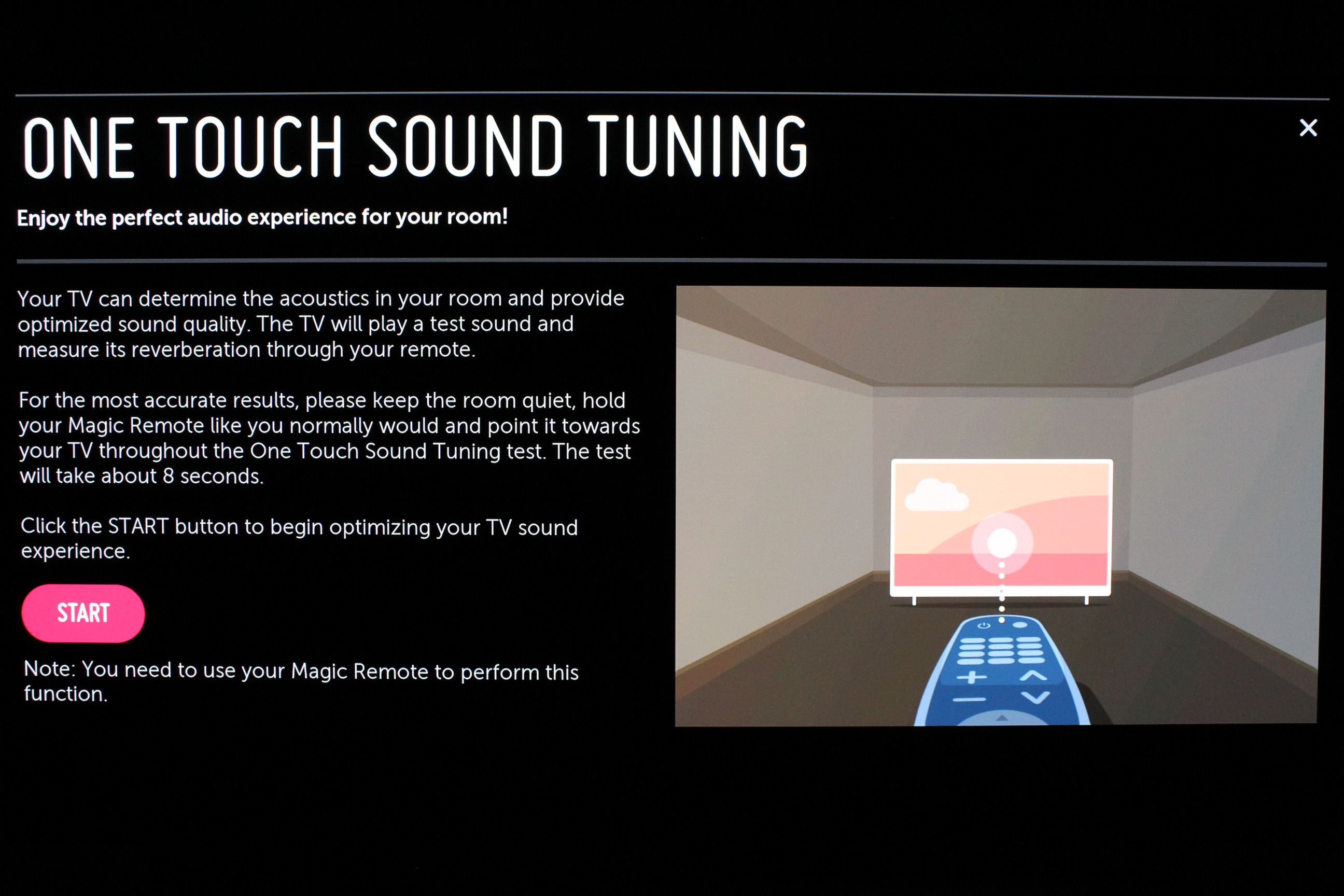
Sound
While the picture quality is as good as you’d it expect it to be, the sound quality is much, much better - without a doubt, the SM9500 is one of the best-sounding TVs we’ve ever heard, and all you have to do is enable AI Sound.
AI Sound is everything it sounds like - the TV uses artificial intelligence to analyze the audio signal coming into the TV, and upmixes the stereo sound to a 5.1 signal. It also enhances the clarity of the sound and expands the soundstage. The result of all this upscaling is then played through the TV’s 40w speakers - and sounds nearly as good as a separate soundbar.
Not only can AI Sound provide a massive boost in audio quality, but LG’s latest crop of TVs also include the ability to do custom room tuning via the Magic Remote. The setup process for One Touch Sound Tuning can be found in the settings and, once complete, the TV will ask if you’d like more of a treble boost, a bass boost or a natural sound.
Of course, a TV can do only so much and audiophiles will still expect more. The good news is that - if you’re looking for true object-based surround sound - the SM9500 has that, too. Hook the NanoCell TV up to a Dolby Atmos-compatible soundbar or speaker system, and you’ll be able to get Atmos sound.
Sound TL;DR: This is one of the best-sounding TVs we’ve ever heard thanks to AI Sound, One Touch Sound Tuning and its built-in 40w speakers. Its audio quality rivals low-end soundbars, but you’ll still want a separate sound system for Dolby Atmos.
Other panels to ponder
At this point there’s no doubt in our minds that the SM9500 is one of the better LED screens of the year... though, admittedly, it’s not the best. That honor still belongs to the brighter, more colorful Samsung Q90R. Samsung’s flagship QLED just handles motion a bit better and really makes HDR content shine thanks its brighter backlight. That said, a 65-inch Q90R TV is significantly more expensive than the SM9500 (at the time this review was written, the Samsung QN65Q90RAFXZA cost $2,999 compared to the SM9500’s $2,499 price tag).
Instead, if you’re looking to buy something in that $2,000 price range, you’ll probably need to settle for the Samsung Q80R ($1,999) or Samsung Q70R ($1,599). Both these two TVs have a higher peak brightness than the LG SM9500 but neither have the beautiful stand or picture quality of the top-tier Q90R.
But the biggest competitor to the SM9500 is LG’s own lineup of OLED TVs. In particular this year’s LG C9 OLED is one of the best ever made, and right now it’s only a few hundred dollars more than the SM9500. That makes universally recommending the SM9500 a bit tricky as the LG C9 OLED is the better TV for most folks.
Final verdict
If the NanoCell 9 Series SM9500 were the only TV LG produced in 2019, it would stand shoulder-to-shoulder with some of the best TVs from Sony and Samsung. It has a wonderful picture quality that’s leaps and bounds more accurate than the first Super UHD TV we saw at CES 2016. Thanks to the Alpha a7 II processor, the upscaling here is better than it has ever been, and WebOS with ThinkQ has quickly become our favorite smart platform.
Unfortunately, though, the SM9500 doesn’t exist in a vacuum, and it’s not the only TV LG made this year. In fact, the 65-inch LG C9 OLED - probably our favorite TV of the year so far - is just a few hundred dollars/pounds more, and is a few hundred dollars/pounds less if you get the 55-inch version.
For now, the C9 OLED is still the TV we’ll universally recommend that everyone, everywhere buys - it uses the same smart platform and has an even better processor - not to mention an OLED panel that has far better black levels. But, that said, if you’re the kind of person who needs a bit more brightness from a TV because your living room is usually bathed in light, the SM9500 is a good alternative.
- These are the best 4K TVs in 2019
- Take a look at our LG discount codes for the best LG offers and savings.
Nick Pino is Managing Editor, TV and AV for TechRadar's sister site, Tom's Guide. Previously, he was the Senior Editor of Home Entertainment at TechRadar, covering TVs, headphones, speakers, video games, VR and streaming devices. He's also written for GamesRadar+, Official Xbox Magazine, PC Gamer and other outlets over the last decade, and he has a degree in computer science he's not using if anyone wants it.
